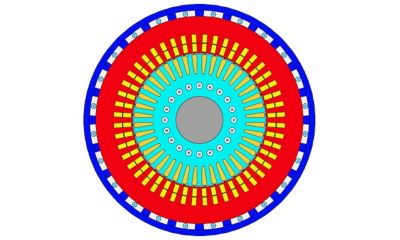-
United States -
United Kingdom -
India -
France -
Deutschland -
Italia -
日本 -
대한민국 -
中国 -
台灣
-
-
产品组合
查看所有产品Ansys致力于通过向学生提供免费的仿真工程软件来助力他们获得成功。
-
ANSYS BLOG
September 5, 2023
Accelerate Design Exploration with Ansys optiSLang
Welcome to the world of Ansys optiSLang, where the boundaries of simulation-driven design exploration and optimization are pushed beyond the conventional limits. optiSLang seamlessly connects with best-in-class Ansys simulation across various physics disciplines. This integration empowers engineers and designers to achieve unprecedented efficiency in their optimization processes and, ultimately, deliver superior products to market.
The Power of optiSLang: Automation and Collaboration
At the core lies optiSLang’s ability to revolutionize the optimization workflow. The main challenges faced by simulation engineers are manual parameter tuning and laborious trial-and-error iterations. Instead, optiSLang employs advanced automation and parametric variation capabilities to optimize designs with minimal effort.
optiSLang leverages the prowess of artificial intelligence (AI) and machine learning (ML) techniques to construct optimal prediction metamodels. These metamodels efficiently explore the design space, unlocking insights that traditional optimization methods may lack. As a result, engineers can make informed decisions faster, leading to more innovative designs and reduced time-to-market.
Let's dive into the exciting episodes of an upcoming webinar series, where we explore how optiSLang collaborates with Ansys simulation in different disciplines:
Episode 1: Optimize your Simulation with Fluent and optiSLang
In this episode, we'll demonstrate how optiSLang seamlessly integrates with Ansys Fluent for computational fluid dynamics (CFD) simulations. We'll tackle an optimization problem using a simulation model that involves multiple design parameters. By employing optiSLang's parametric workflow, we'll showcase how the optimization process becomes streamlined, enabling engineers to explore a vast design space efficiently and identify the best design configurations.

CFD simulation of aircraft aerodynamics in Ansys Fluent
Episode 2: Optimize your Simulation with Mechanical and optiSLang
The second episode delves into the world of finite element analysis (FEM) using Ansys Mechanical and optiSLang. We'll illustrate how optiSLang's powerful algorithms coupled with Mechanical's robust simulation capabilities can optimize structural designs, starting from a simple geometry. By automating the simulation process and utilizing optiSLang's AI-driven metamodels, engineers can achieve enhanced structural performance while reducing the time and effort typically required in traditional optimization methods.

Structural simulation of a housing structure in Ansys Mechanical
Episode 3: Optimize your Simulation with Speos and optiSLang
The third episode is dedicated to optical simulations with Ansys Speos and optiSLang. Optical systems demand precision and optimization to meet stringent performance criteria. We'll showcase how optiSLang's collaboration with Speos empowers engineers to explore complex optical design spaces, leading to the creation of high-quality optical systems faster and with improved accuracy.

Lighting simulation of an automotive exterial light in Ansys Speos
Episode 4: Optimize your Simulation with MotorCAD and optiSLang
In this episode of the series, we'll focus on electronics and the powerful combination of Ansys Motor-CAD and optiSLang. By integrating these tools, engineers can optimize electronic systems efficiently, ensuring optimal thermal management, electromagnetic performance, and overall electronics reliability. The automation and AI-driven metamodels of optiSLang streamline this process, allowing engineers to deliver optimized electronic designs promptly.

Motor-CAD drawing of rotating elements in Ansys Motor-CAD
Episode 5: Optimize your Simulation with LS-DYNA and optiSLang
The final episode delves into the world of showcasing the powerful combination of Ansys LS-DYNA and optiSlang, for a car crash simulation use case. LS-DYNA, widely used for nonlinear transient dynamic FEA is combined with optiSlang for optimization and sensitivity analysis. The harmonious integration aims to enhance the crash simulation accuracy, efficiency, and reliability.

Crash simulation in Ansys LS-DYNA
We invite you to embark on an exciting journey with Ansys optiSLang and its integration with best-in-class Ansys simulations. This webinar series promises to enlighten you about the immense possibilities that arise when simulation-driven design exploration and optimization are taken to new heights.
Embrace the power of AI and ML in optiSLang, and witness how engineering excellence is achieved with minimal effort. Are you ready to elevate your optimization game? Join us for the webinar series and unlock the potential of Ansys optiSLang.










